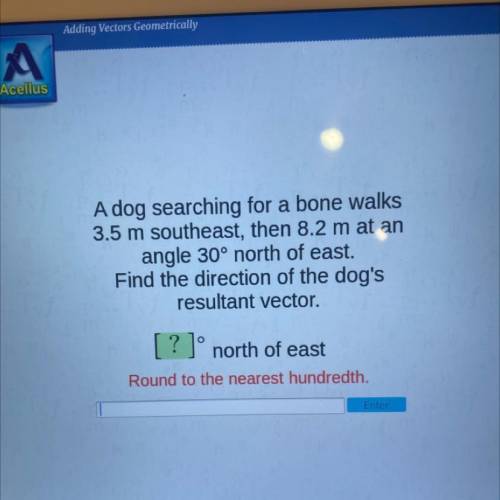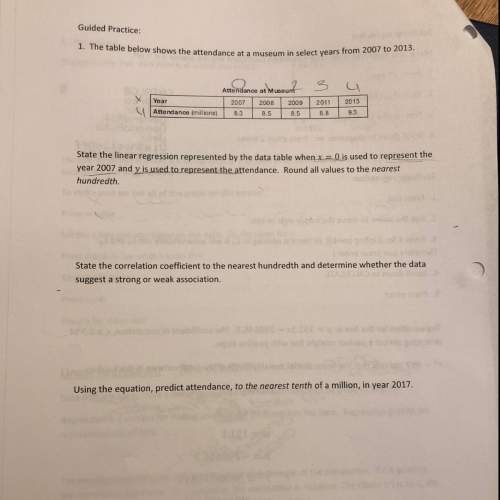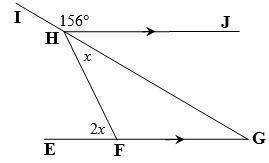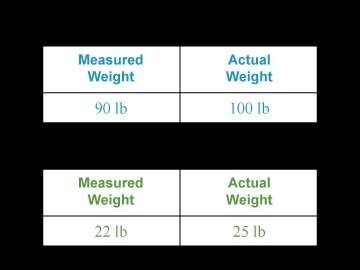angle 30° north of east.

Mathematics, 23.11.2020 22:40 emhunter101
A dog searching for a bone walks
3.5 m southeast, then 8.2 m at an
angle 30° north of east.
Find the direction of the dog's
resultant vector,
[? ]° north of east
Round to the nearest hundredth.


Answers: 1


Other questions on the subject: Mathematics

Mathematics, 21.06.2019 18:00, paigejohnson6161
State if the two triangles are congruent. if they are, state how you know?
Answers: 1

Mathematics, 21.06.2019 21:00, hastephens03
Mr. thompson is on a diet. he currently weighs 260 pounds. he loses 4 pounds per month. what part of the story makes the relationship not proportional?
Answers: 3

Mathematics, 21.06.2019 23:20, ajbrock1004
In a small section of a stadium there are 40 spectators watching a game between the cook islands and fiji. they all support at least one of the two teams. 25 spectators support the cook islands and 16 of these support both teams. how many support only fiji?
Answers: 2

Mathematics, 21.06.2019 23:30, claytonhopkins
In a study of the relationship between socio-economic class and unethical behavior, 129 university of california undergraduates at berkeley were asked to identify themselves as having low or high social-class by comparing themselves to others with the most (least) money, most (least) education, and most (least) respected jobs. they were also presented with a jar of individually wrapped candies and informed that the candies were for children in a nearby laboratory, but that they could take some if they wanted. after completing some unrelated tasks, participants reported the number of candies they had taken. it was found that those who were identiď¬ed as upper-class took more candy than others. in this study, identify: (a) the cases, (b) the variables and their types, (c) the main research question, (d) identify the population of interest and the sample in this study, and (e) comment on whether or not the results of the study can be generalized to the population, and if the ď¬ndings of the study can be used to establish causal relationships.
Answers: 2
You know the right answer?
A dog searching for a bone walks
3.5 m southeast, then 8.2 m at an
angle 30° north of east.
angle 30° north of east.
Questions in other subjects:



Mathematics, 05.10.2019 15:30

Mathematics, 05.10.2019 15:30


Chemistry, 05.10.2019 15:30

Health, 05.10.2019 15:30

History, 05.10.2019 15:30


Mathematics, 05.10.2019 15:30






